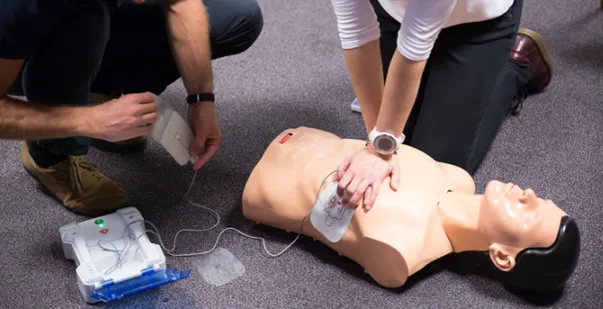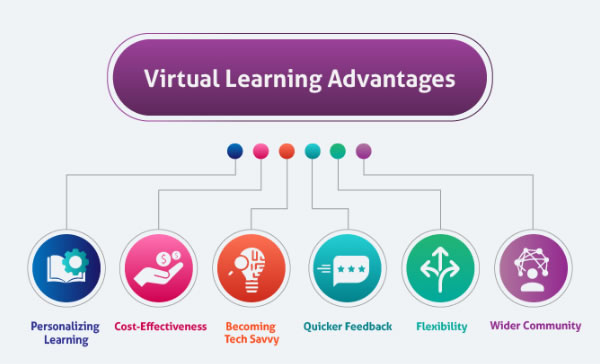
Last Updated On: December 26, 2024
Cardiopulmonary resuscitation (CPR) techniques have witnessed major changes over the years. The most evident change is the incorporation of artificial intelligence into the healthcare field. AI’s current worth in the same market is estimated to reach 164.16 billion by 2030 for this reason. If you are a healthcare professional, you must also know about the role of AI in CPR training programs in detail. Currently, it has made the training more personalized, accessible, and effective for everyone. So, let’s begin with understanding the role of AI in CPR and AED training programs, its benefits, and other relevant details.
The healthcare sector has witnessed remarkable technological advancements in recent years. However, AI has emerged as a game-changing force, especially in medical education. Traditional training methods often lack the personalized feedback and real-time assessment capabilities that modern AI solutions provide to you. Artificial intelligence in emergency medicine has become particularly effective in developing more engaging training programs for life-saving procedures like AED and CPR usage.
Historically, CPR and AED training relied on in-person classroom instructions, mannequin practices, and periodic recertifications. These traditional methods had several limitations that prevented them from providing consistent, objective feedback and measuring professionals’ performance.
The introduction of AI in CPR training programs has addressed many of these limitations. This involves offering standardized, data-driven assessment tools to measure factors like compression depth, rate, and hand positioning with precision.

#image_title
Advantages of Virtual Learning
AI in CPR and AED training is all about personalizing the learning experience. It means now professionals can easily get certifications customized according to their needs. AI systems also create personalized training modules that specifically focus on various individual strengths and weaknesses. Below are the key ways how AI enhances CPR performance and feedback for professionals as well as lay responders:
AI-driven platforms adapt to your needs as a learner in real-time. For instance, if you perform chest compressions at the wrong depth, the system adjusts the training to provide you with more instructions in the same area. This creates an effective learning environment where you can focus on mastering skills rather than pursuing a generic course.
AI for CPR performance tracking also enables instructors to identify specific areas for improvement. This allows them to adjust their teaching approach accordingly.
AI accounts for different learning styles across CPR and AED training programs. Some individuals learn better through visual aids, while others prefer hands-on practice. AI-powered systems help adjust the content delivery methods to ensure that every individual engages effectively with the training programs.
AI algorithms monitor several parameters, such as hand placement, compression rate, and depth, during CPR training. These systems help provide immediate feedback to correct any improper techniques, such as applying too little or extensive pressure during chest compressions.
When you can correct your mistakes in real-time, you are more likely to feel confident about your skills. This confidence translates into better performance during real emergencies, where correct responses are critical.
AI-powered Virtual Reality (VR) is one of the latest developments in the field of CPR and AED training. VR enhances technical and decision-making skills in high-pressure environments by indulging you in several lifelike emergency scenarios. You must also recognize cardiac events and contact emergency medical services (EMS) in these situations. The following are the ways through which AI is making future of resuscitation training more promising:
AI-driven VR simulations place you in emergencies that often mimic numerous real-life challenges. For instance, you may have to administer CPR in a crowded public area or help a person experiencing a cardiac event in some remote location. These scenarios allow you to build skills and become capable of staying calm and focused under pressure.
When working in VR environments, you must always reinforce your muscle memory associated with CPR techniques. The most common instance is analyzing the rhythm and pressure of chest compressions. This improves the likelihood of performing CPR effectively in real-world emergencies.
When an emergency arises, many people start panicking and don’t understand what steps to take during the most critical time. To deal with such scenarios, AI also helps learners practice decision-making in stressful environments beyond the technical aspects of CPR and AED. For example:
AI-powered systems can help you simulate complex emergencies, like multiple victims or sudden changes in a patient’s health condition. You can easily practice making informed decisions in these high-stakes scenarios with AI’s assistance, which prepares you for real-world challenges.
AI is all about complex simulations that help you develop critical thinking skills. This means you can prioritize actions easily during chaotic situations. For instance, The development of AI-powered AED simulators has also enhanced training effectiveness by providing realistic scenarios for practicing defibrillator use. These simulators can mimic various cardiac rhythms and respond to user actions to create a more comprehensive learning experience.
AI is booming at lightning speed, and new AI technology in different domains is being integrated every day. Hence, the future of AI in CPR and AED training is also tremendous, with upcoming developments in more advanced learning techniques. You can expect the following changes in the future of resuscitation training:
Future AI-powered systems may incorporate predictive learning models to anticipate when learners struggle with their courses based on previous data. These systems could adjust the training modules accordingly to prevent any mistakes before they happen.
CPR for healthcare provider training powered by artificial intelligence could also integrate with wearable technology, like smartwatches or fitness trackers. This would help healthcare providers monitor heart rate and other physiological factors during all the practice sessions. This data could also enhance the overall training accuracy and effectiveness.
We can not deny the fact that AI is actually taking over every field. However, the reality is that AI is still in its initial stages when it comes to its specific implementations in the healthcare sector. Despite having numerous benefits, AI in CPR training programs has certain limitations. These include:
Advanced AI training systems can be expensive, which may limit access for smaller organizations or training centers. Only large organizations and professionals with sufficient budgets may be able to access AI-driven training programs.
Current AI systems may not capture all aspects of human performance and may occasionally provide incorrect feedback. Moreover, artificial intelligence is still in its early stages and needs more refinement for error-free results.
Incorporating AI systems into existing CPR and AED training programs requires efficient planning and potential infrastructure updates. However, due to the implementation of advanced technologies in the future, not every training program could be changed.
AI provides excellent technical feedback, but it cannot fully replace the human element in teaching empathy and decision-making during emergencies. Organizations will always need manual instructors to manage training programs.
The integration of AI in CPR and AED training represents an advancement in emergency response education. While challenges exist, the benefits of enhanced feedback, personalized learning, and improved skill retention make AI an invaluable tool in preparing both healthcare professionals and civilians.
You can learn more about the benefits of AI by enrolling in a CPR certification online course. This will help you understand which specific aspects of the training program need transformation with the help of artificial intelligence. Make sure to approach an accredited organization that follows the latest curriculum associated with the course.
Read More: